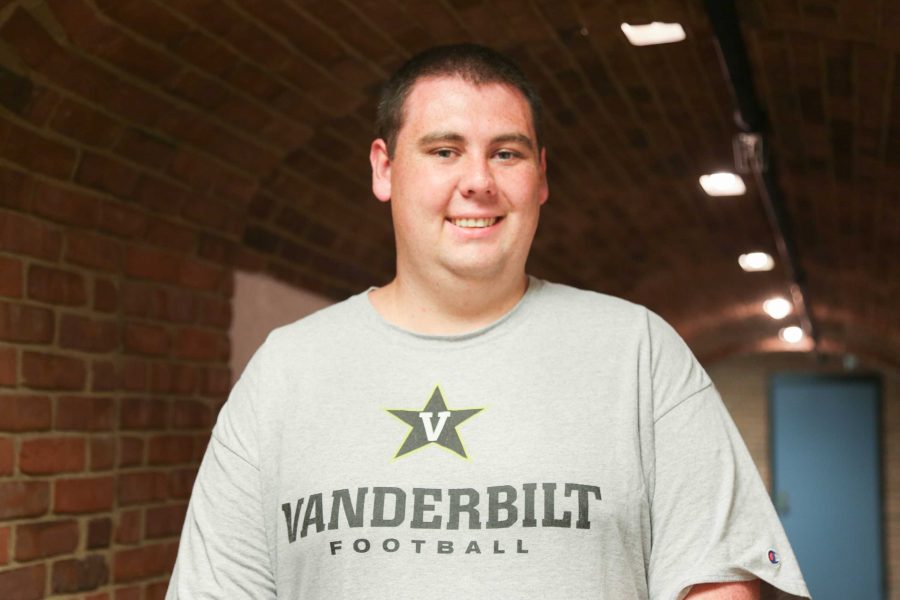Between 2012 and 2014, I visited roughly 30 colleges and universities, applied to 16 and chose Vanderbilt as the place that would best fit my needs and wants in a school. One factor in my search was the political climate of the different campuses. When I say that, however, I do not necessarily mean that I needed a right-wing echo chamber. If that were my goal, I would have exclusively looked at known conservative schools or state schools in deeply red states. I was mostly looking for a healthy political climate where conservative views would be heard and respected on campus.
When I arrived at Vanderbilt in 2014, I definitely felt that Vanderbilt lived up to that goal. I had often heard it said that Vanderbilt was the “most conservative top 20 university” (or various iterations of that concept), and I definitely do think that was accurate four years ago. My freshman seminar class was essentially on Obamacare, and half of the class was opposed to the bill. According to AnchorLink membership, the College Republicans (VCR) were several times larger than the College Democrats; additionally, VCR was far more active on campus and far more universally conservative than it is today. Conservative perspectives were generally respected. I would certainly say that a majority of the people I met my freshman year leaned to the right. Conservative speakers were brought to campus, both by the administration and by student groups. Groups on the left were certainly still active too– the Vanderbilt Feminists were particularly active that year– but, most of all, there was a strong sense of open dialogue and exchange of ideas on campus.
Even then, there were worrying signs. The Hustler used the cover page of its print edition to endorse the “No on 1” campaign (opposition to a pro-life ballot initiative). As a Vanderbilt student who regularly campaigned for “Yes on 1” in my free time, I felt that the “campus elites,” as I would come to call them, were completely ignoring my perspective. The bigger turning point, however, was the 2016 presidential election. In the primary season, I was supporting Senator Marco Rubio and was on the executive board of the Vanderbilt Students for Rubio. I actually found it really easy to find students who supported Rubio, and I often wonder if Vanderbilt would still be the traditional center-right Vanderbilt had someone like Rubio, a very conservative Republican, but one whose rhetoric could have appealed to college students, won the Republican nomination.
Following President Trump’s nomination, the political climate on campus changed entirely. When I debated a left-wing activist on social issues two weeks before the election, I now know there was a room full of students watching a live stream and jeering me and my values. I do think that former VSG President Ariana Fowler (who was very vocal in her support for Hillary Clinton in 2016) was a major driving force behind the sudden liberal turn of the campus, as she allowed student government’s role to switch from issues of campus life to being a mouthpiece for the left-wing agenda.
An undoubted truth about this is that the left became far more mobilized and active. When VSG passed a “sanctuary campus” resolution, they did so under pressure from about 50 loud “social justice warriors” who all organized to go to the VSG meeting. Initially, the perceived change in the campus climate was just the result of the left being far louder and more active than the right. However, the eventual result of the left being more vocal than the right and student organizations and the administration starting to bring in far more leftist speakers than right-leaning ones was that undecided or moderate students only heard one perspective. Any view makes sense if you do not hear arguments against it, so the median Vanderbilt student started to drift far to the left.
As of this writing, the College Democrats outnumber the College Republicans by a ratio of 3:2 on AnchorLink. Compare that to four years ago, when VCR was more than twice as large as its Democratic counterpart. I have seen changes first-hand that go far beyond raw membership totals. If membership being down were the only issue for VCR, I would not be nearly this concerned about their future. It is not nearly as active as it was in 2014, when we had at least one GBM a month plus plenty more opportunities for activism. Nor is it as conservative as it was when I first got involved, and today it largely ignores social issues.
Following losing an election for VCR president largely because I was viewed as too conservative and too vocal on social issues, I started a chapter of Young Americans for Freedom, which is affiliated with Young America’s Foundation. It was a real struggle to get the group really off the ground, and it eventually pretty much fizzled out (after hosting a few successful events) due to a lack of organic interest. I admit that I was not the greatest recruiter or the greatest with administrative tasks, but I was so passionate about what I was doing and I really hope that someone reading this will be able to resurrect Vanderbilt’s YAF chapter, as they do great work on all sorts of campuses.
I am optimistic that there is still a latent conservative movement on campus. Relatively frequently, students I do not even know quietly come up to me and tell me they agreed with something I said. Even if we are not 50% or more anymore, we might still be 30%. I have tried (and largely failed) to organize that sizeable minority and mobilize us, but I hope and pray that there is someone on this campus who will take up the torch of standing up for what is right.

